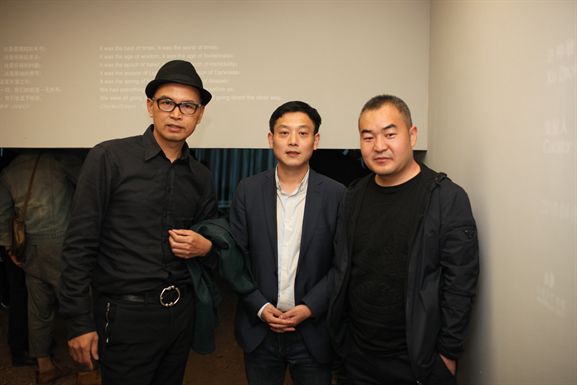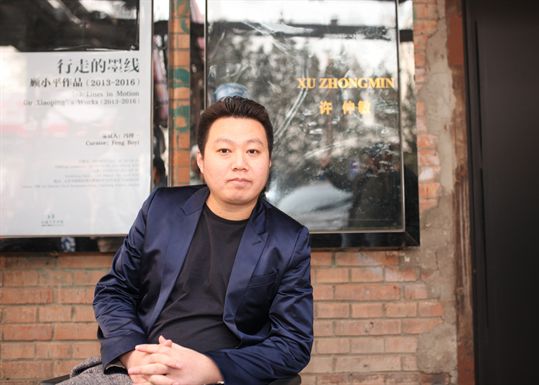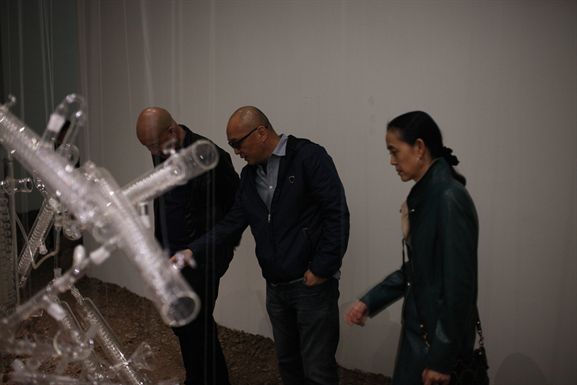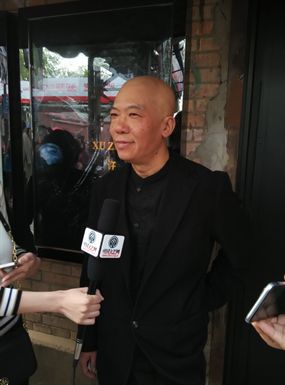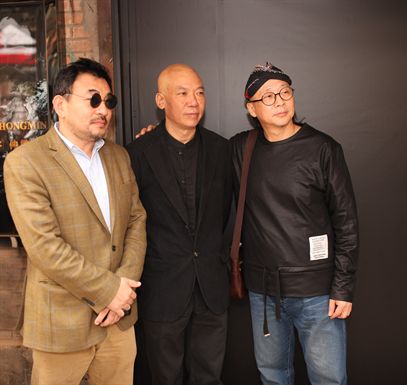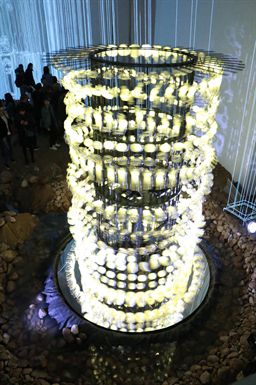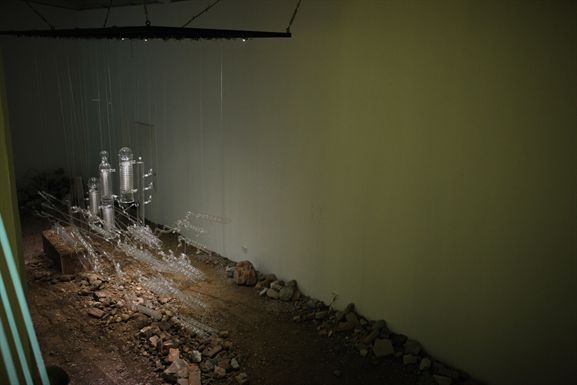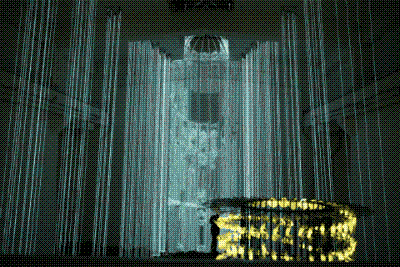Apr 09 - May 08, 2016
Press Release
Curator Article
It was the best of times, it was the worst of times, it was the age of wisdom, it was the age of foolishness, it was the epoch of belief, it was the epoch of incredulity, it was the season of Light, it was the season of Darkness, it was the spring of hope, it was the winter of despair, we had everything before us, we had nothing before us, we were all going direct to Heaven, we were all going direct the other way.
- Charles Dickens Tales of Two Cities
In 1968, Stanley Kubrick premiered his sci-fi film 2001 Space Travel. In this film, the moving images flip from the apes madly throw a bone to a slow traveling spaceship. The film has given people of the time a shocking view of space, where the thousands of years of civilization and humanity seem to have flashed by in a second. In the same year, the first case of heart transplant was successfully operated in South Africa. Louis Washkansky became the first recipient of a human cardiac transplant, in order to live a new life.
Thousands of kilometers away, the ancient Tibetans were still practicing the religious ritual on special holidays every year, called “circling the mountain”, in their journey of pilgrimage and meditation. The pilgrims would spend days walking around a sacred mountain, meditate, pray, to strive towards reaching nirvana.
In many historical moments or ancient rituals, the passing of time has always been imbued with a sense of apocalypse. But looking back on them now, the tragic aesthetics becomes a rather simple aesthetics of form, invoking the imagination for their successors. What has passes in the contrary would seem diverse, the formally a confused state of mind would be excited by the romance of its narrative where distance becomes flavorful. In 2006, Xu Zhongmin’s mechanical installation, Circle the Mountain, embodied his understanding of life philosophy. In the same year, another work Circle the Mountain, encompassed Kubrick’s narrative structure and the sense of time and space in the aesthetics of life.
All illusions come from reality, mixed with imagination, the self, dreams and repetitive motion of spiraling ascension.
A decade since Circle the Mountain, Xu Zhongmin stepped onto a different path of imagination and sensibility, whose vision shifts from focusing on mechanical installations alone to integrated spatial sensibility. Like the pieces in a film montage, spinning and flying figures, who appears and disappears in the abstraction of time. As it spins clockwise, the mechanical installation the whistling glass tubes, flickering churches, the ruins in the outskirts, the trumpets and accordions scattered between the stones… the artist has created an unprecedented spectacle, the objects in the exhibition, float in multiple spaces and altitudes, as if each has its own senses, coming into a vivid world, having been there, without leaving much behind. Where time has given a distance.
Metaphor often has two aspects, bridging two worlds of materials and allusions. At the other end of the world, a given moment or in a shattered scene, has flashed in our reality or imagination. It left marks and the human temperature to guide us into our surroundings, the cruel reality, a journey in the past: into the ubiquitous industrial ruins, the vastness of the earth, the city in the haze, the winding rivers, passing quickly, swarming with people’s silent desires, outside of the window, the light shines in.
Xu Zhongmin adopts the collaborative effect of light, machines, sound and architecture to transform the space into a sensual experience layered with reality and imagination. Through which, the viewer may re-examine one’s relationship with the world, projecting the obscene and disasters in reality, pointing to the infinity of the spirit, and the irresistible fate. In the end, leaving a deep look, and a long gone elegy.
Perhaps, a creative moment of enlightenment would help to sense the world turning upside down, or another world. Reactivated senses allow us to expand on certain imagination, distinguish the faulty from the truth. It comes from the past and future people have experiences, swinging between heaven and earth, shuttle back and forth between the two extremes, holding Sisyphus-type of tragic ideology and the absurdity and helplessness of our existence; as well as respectful praise to the senses of the present, the epic determination of those singing the anthems, life and death, reality and life cycles, equality and fate, helplessness and pathos…
At the height of the May Movement in 1968 France, people are disappointed and in anguish, trying to savage the situation through large-scale resistance movement, they wished to terminate a preempted institution of life through critical and avant-garde thinking. At the other end of the world, the collapsed generation releases the helplessness of resistance through degeneration and spiritual exile, the outcome of their abuse of drugs, sex and crimes project their rotten desires. In 1986, the American spaceship Challenger exploded in the air, in the same year, Chernobyl nuclear power plant of the former Soviet Union exploded, in the following years, commercial airplanes crashed, dam collapsed, over exploitation of natural resources, large scale industrial pollution, or the smog that floats over this city, where people live.
Today, in this exhibition, everything restores to calmness, the sun still rises, and life continues.
Cui Cancan

